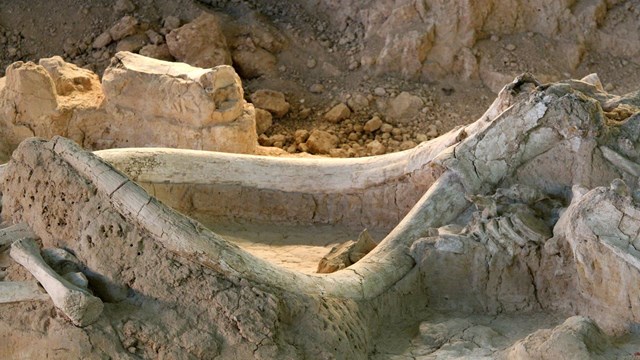
The ancient bones were found by the McEwen family on their land in Ellis County south of Dallas, the family has decided to donate it to the city’s Perot Museum of Nature and Science. Estimiates put it at anywhere from 20-40 or even 60,000 years old.
“We were very excited to discover the mammoth in our sand pit and realize it was 90 percent complete. One of the greatest joys in this whole thing was to meet and see the excitement on the faces of the many volunteers,” said Wayne McEwen via a news release.
McEwen’s son and grandson made the amazing discovery during a regular day’s work back in May, according to a news release from the Perot Museum. The pair were operating a dump track when the digger came to a sudden halt after hitting what turned out to be a massive tusk.

“Having been found in our own backyard, this stunning example of a mammoth skeleton is especially meaningful because it’s a part of our heritage and the natural history of North Texas,” said Colleen Walker, the Museum’s Eugene McDermott Chief Executive Officer, in a news release.
“The Perot Museum is truly grateful to the McEwen family for their enormous generosity in sharing this discovery with us and the world.”
The mammoth is believed to be a female, which would have stood 8-9 feet high and weighed about the same as a modern day Asian elephant.
Bones show the animal fell on its left side and died, the shape is so clear even an untrained eye can make out the different parts of the skeleton. The skull, lower jaw, various neck and back vertebrae, two shoulder blades, limbs plus ribs and pelvis are clear.

“I am extremely excited about this outstanding find. It’s very unique for North Central Texas,” said paleontologist and project director, Tom Vance in the news release. “What is so meaningful is to know that this animal walked through our backyard thousands of years ago.”
The mammoth is due to take its place at the Perot museum some time in September.